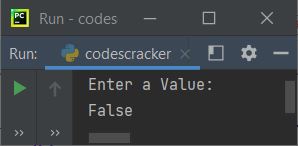- Python Built-in Functions
- Python All Built-in Functions
- Python print() Function
- Python input() Function
- Python int() Function
- Python float() Function
- Python len() Function
- Python range() Function
- Python str() Function
- Python ord() Function
- Python chr() Function
- Python ascii() Function
- Python pow() Function
- Python type() Function
- Python List Functions
- Python list() Function
- Python insert() Function
- Python append() Function
- Python extend() Function
- Python pop() Function
- Python remove() Function
- Python reverse() Function
- Python sort() Function
- Python sorted() Function
- Python Dictionary Functions
- Python dict() Function
- Python update() Function
- Python get() Function
- Python keys() Function
- Python setdefault() Function
- Python fromkeys() Function
- Python items() Function
- Python popitem() Function
- Python Tuple Function
- Python tuple() Function
- Python Set Functions
- Python set() Function
- Python frozenset() Function
- Python String Functions
- Python split() Function
- Python join() Function
- Python format() Function
- Python replace() Function
- Python Iterator Functions
- Python iter() Function
- Python min() Function
- Python max() Function
- Python sum() Function
- Python count() Function
- Python index() Function
- Python copy() Function
- Python clear() Function
- Python next() Function
- Python filter() Function
- Python enumerate() Function
- Python zip() Function
- Python reversed() Function
- Python Number Functions
- Python abs() Function
- Python bin() Function
- Python oct() Function
- Python hex() Function
- Python round() Function
- Python divmod() Function
- Python complex() Function
- Python File Handling Functions
- Python open() Function
- Python read() Function
- Python readable() Function
- Python readline() Function
- Python readlines() Function
- Python write() Function
- Python writable() Function
- Python writelines() Function
- Python close() Function
- Python seek() Function
- Python tell() Function
- Python flush() Function
- Python fileno() Function
- Python truncate() Function
- Python Class Functions
- Python object() Function
- Python property() Function
- Python getattr() Function
- Python setattr() Function
- Python hasattr() Function
- Python delattr() Function
- Python classmethod() Function
- Python staticmethod() Function
- Python issubclass() Function
- Python super() Function
- Python Misc Functions
- Python all() Function
- Python any() Function
- Python isatty() Function
- Python bool() Function
- Python callable() Function
- Python globals() Function
- Python locals() Function
- Python dir() Function
- Python id() Function
- Python isinstance() Function
- Python map() Function
- Python repr() Function
- Python slice() Function
- Python vars() Function
- Python Advance Functions
- Python help() Function
- Python hash() Function
- Python breakpoint() Function
- Python bytes() Function
- Python bytearray() Function
- Python memoryview() Function
- Python compile() Function
- Python eval() Function
- Python exec() Function
- Python Tutorial
- Python Tutorial
- Python Examples
- Python Examples
Python bool() Function
The bool() function in Python returns the boolean value (True or False) of a specified object. For example:
x = 0 print(bool(x)) x = False print(bool(x)) x = None print(bool(x)) x = [] print(bool(x)) x = 10 print(bool(x)) x = [50] print(bool(x)) x = [False] print(bool(x)) x = [0] print(bool(x)) x = "codescracker" print(bool(x))
Following is the output produced by this Python program, demonstrating the bool() function:
False False False False True True True True True
Python bool() Function Syntax
The syntax of bool() function in Python is:
bool(obj)
where obj is an object such as list, number, string etc.
Note: The bool() function always returns False, if the specified object is empty.
Note: The bool() function returns False, if the specified object is (or is equal to) False, 0, or/and None.
Python bool() Function Example
Here is an example of bool() function in Python. This program allows user to enter the value:
print("Enter a Value: ", end="") val = input() print(bool(val))
The snapshot given below shows the sample run of above program, with user input False:

This is because, when you enter the value False as input, then using the input() method, the value
gets initialized to val. But by default, the input() method converts the value into a string type. Therefore
the value False gets treated as a string type value, not a boolean False. Same thing goes with 0
and None. But when you hit/press ENTER without typing anything, means that the variable val
becomes empty, and in that case, the output will be False. Here is the sample run:

« Previous Function Next Function »